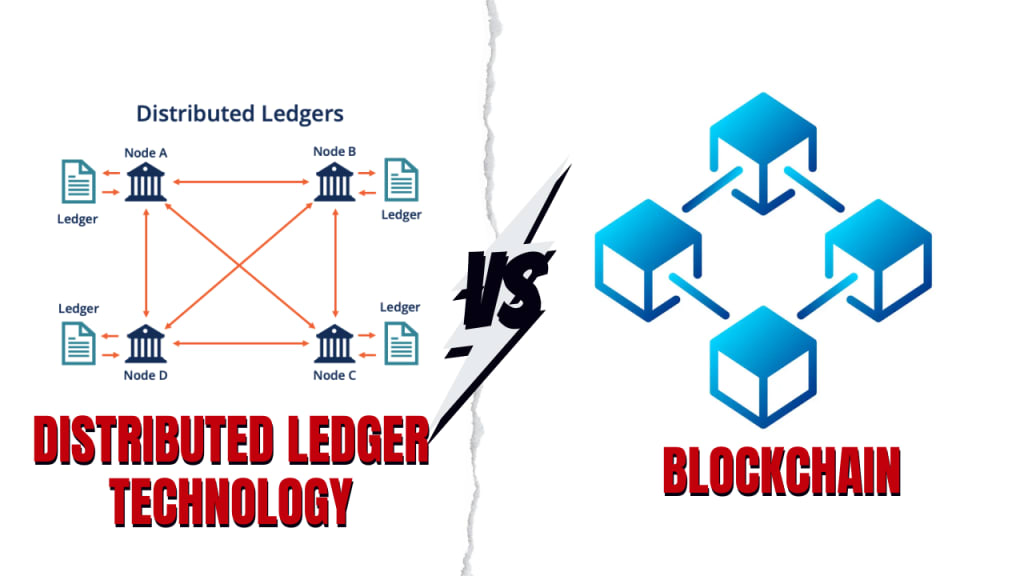Exploring the Distinction: DLT vs. Blockchain
Discover the key differences between distributed ledger technology (DLT) and blockchain in this informative article. Gain a comprehensive understanding of their unique features and applications.

Introduction
In the ever-evolving landscape of digital technology, distributed ledger technology (DLT) and blockchain have emerged as transformative innovations. While often used interchangeably, it is essential to grasp the distinction between DLT and blockchain. This article aims to provide a comprehensive exploration of their definitions, core principles, and practical applications.
I. Understanding Distributed Ledger Technology (DLT)
A. Definition of DLT and its Core Principles
DLT refers to a decentralized system that maintains and updates a shared database across multiple nodes or participants. Its core principles include transparency, immutability, and decentralization. Through cryptographic techniques, DLT ensures the integrity and security of data. Understanding these core principles is crucial to grasping the unique advantages offered by DLT.
B. Advantages and Benefits of DLT
DLT offers several advantages in various domains. Firstly, it enhances security by eliminating a single point of failure and employing consensus mechanisms for data validation. Secondly, DLT reduces costs by eliminating intermediaries and automating processes. Additionally, DLT improves efficiency by providing real-time access to a shared ledger, streamlining transactions, and enhancing traceability.
C. Real-World Applications and Use Cases of DLT
DLT finds applications in diverse industries. In finance, DLT enables faster and more secure cross-border transactions, eliminates reconciliation processes, and facilitates the issuance of digital assets. Supply chain management benefits from DLT's ability to enhance transparency, traceability, and trust. Furthermore, DLT is used in healthcare for secure patient data sharing, interoperability, and clinical trials management. Other sectors utilizing DLT include voting systems, intellectual property rights management, and energy trading.
II. Unraveling Blockchain Technology
A. Definition of Blockchain and its Fundamental Characteristics
Blockchain is a specific type of DLT that utilizes a chain of blocks to record and verify transactions. Each block contains a set of transactions, and these blocks are linked together through cryptographic hashes, forming an immutable ledger. The fundamental characteristics of blockchain include decentralization, transparency, immutability, and security through cryptographic algorithms.
B. Exploring the Concept of Blocks and the Chain of Transactions
In the blockchain, transactions are grouped into blocks and added to the chain in a linear, chronological order. Each block contains a unique identifier (hash) and a reference to the previous block's hash, forming a chain of blocks. This structure ensures the integrity of the data and prevents tampering. Miners, through the process of consensus, validate and add new blocks to the chain.
C. Use Cases and Applications of Blockchain Technology
Blockchain has gained significant attention across various industries. In finance, blockchain enables secure and transparent transactions, eliminates intermediaries, and enhances financial inclusion. Supply chain management benefits from blockchain's ability to provide end-to-end traceability, provenance verification, and counterfeit prevention. Additionally, blockchain is utilized in identity management, decentralized applications (DApps), digital voting systems, and intellectual property rights management.
III. Distinguishing DLT from Blockchain
A. Highlighting the Unique Features and Functionalities of DLT
DLT encompasses a broader spectrum of technologies beyond blockchain. It offers flexibility in consensus mechanisms, governance models, and privacy settings. DLT allows for customization according to specific use cases, accommodating different requirements and regulatory frameworks.
B. Key Differences between DLT and Blockchain
DLT and blockchain differ in various aspects. While blockchain is a specific type of DLT, DLT encompasses a wider range of technologies beyond blockchain. Consensus mechanisms differ, with blockchain commonly using Proof of Work (PoW) or Proof of Stake (PoS), while DLT allows for various consensus algorithms. Scalability and performance also vary, with DLT frameworks exploring different approaches like sharding or sidechains to address scalability challenges. Governance and control differ as well, with DLT supporting different models such as consortium-based governance or centralized control. Privacy and transparency can be customized in DLT, whereas blockchain transactions are transparent and visible to all participants, though with limited privacy measures.
IV. Comparing Practical Use Cases
A. Analyzing Real-World Scenarios Where DLT or Blockchain is Preferred
The choice between DLT and blockchain depends on the specific requirements of a given use case. DLT's flexibility makes it suitable for applications requiring tailored solutions, such as supply chain traceability or healthcare records management. Blockchain, with its transparent and secure nature, is preferred in financial transactions, smart contracts, and areas requiring trust and transparency.
B. Examining Industries and Sectors Adopting DLT or Blockchain Solutions
Finance and banking benefit greatly from DLT and blockchain solutions, as they streamline transactions, reduce fraud, and enhance security. Supply chain management leverages blockchain for end-to-end traceability, reducing counterfeit products and ensuring ethical sourcing. In healthcare, DLT ensures the secure sharing of patient data and interoperability between healthcare providers. Other sectors such as government, energy, insurance, and real estate are also exploring DLT and blockchain applications.
V. Conclusion
A. Summarizing the Key Takeaways and Differences between DLT and Blockchain
In conclusion, understanding the differences between DLT and blockchain is crucial in navigating the ever-evolving digital landscape. DLT encompasses a broader range of technologies, providing flexibility and customization. Blockchain, as a specific type of DLT, excels in transparency, security, and immutability.
B. Emphasizing the Importance of Understanding Their Respective Strengths and Limitations
Recognizing the strengths and limitations of DLT and blockchain is vital for making informed decisions and leveraging their potential. By understanding the unique features and applications of DLT and blockchain, businesses and individuals can harness their benefits effectively.
C. Encouraging Further Exploration and Research into DLT and Blockchain Technologies
The field of DLT and blockchain is continuously evolving, with new advancements and use cases emerging. Encouraging further exploration and research into these technologies is essential to unlock their full potential and discover innovative solutions across industries.
About the Creator
TeckyBlock
Learn about blockchain technology, cryptocurrency, NFT and metaverse in here. please visit https://teckyblock.com for further information.






Comments
There are no comments for this story
Be the first to respond and start the conversation.